

We had very few tourist-type activities planned for while we were in Italy. In fact, the only "must do" item on our list was to visit the Studiolo in Urbino. "What," you might ask, "is the Studiolo?" Well, we are so glad you asked. It is defined (according to the National Gallery of London) as "a small room, often lavishly decorated, dedicated to reading, studying and writing. It is generally of a relatively private character." The Metropolitan Museum of Art in NYC has a fabulous studiolo, originally from the Ducal Palace in Gubbio. We both, particularly Anne, fell in love with the inlaid (intarsia) wood walls with the illusion of shelves, windows, musical instruments, and other items. It turns out that this room was made for Duke Federico, who had a similar room created in his palace in Urbino. And that one is still in Urbino! And there we were, staying just a half hour drive away. So obviously we went to see it.
Urbino is location #16 on the map.
Here is Anne, standing just outside the door of the Studiolo.
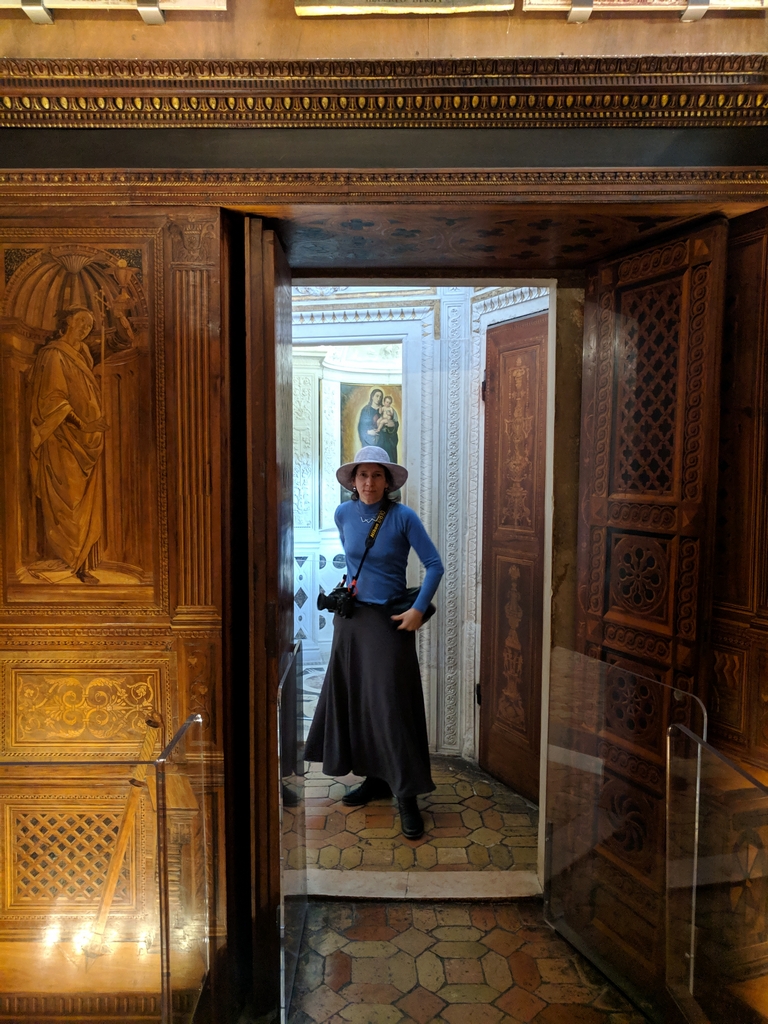
The Studiolo is thought to date back to 1476, since that date is inscribed in the ceiling. The walls include many 'illusionist' scenes. Although there are very few squirrels in Italy today, back 500 years ago there were obviously more of them. This scene shows a squirrel on a portal, with a country scene behind it. Everything in this picture is actually flat, including the columns.
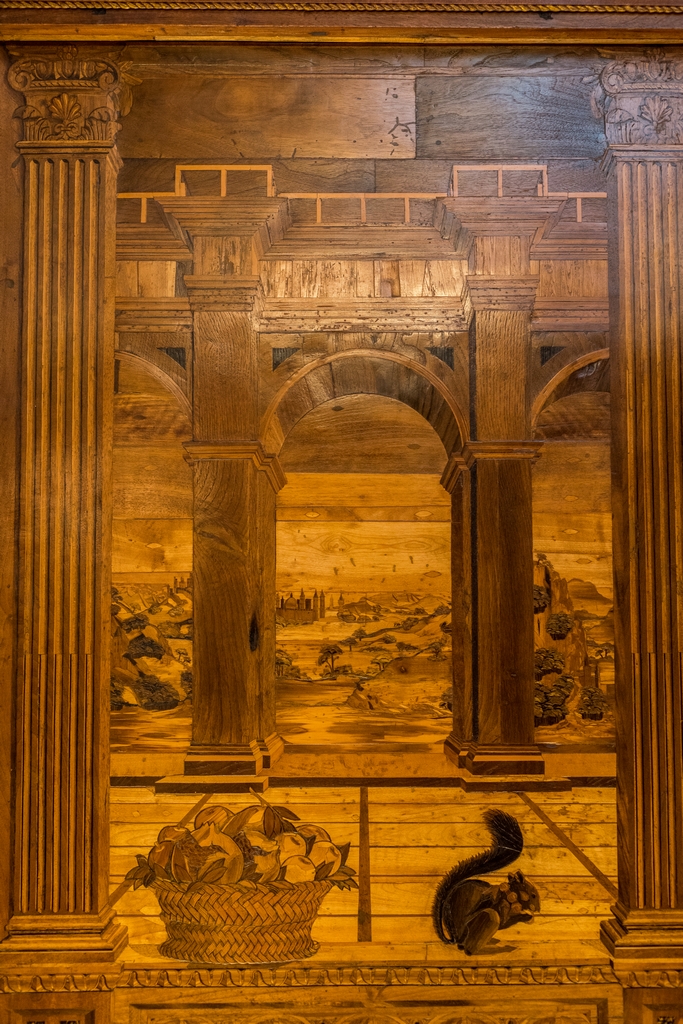
A closer view at the squirrel:
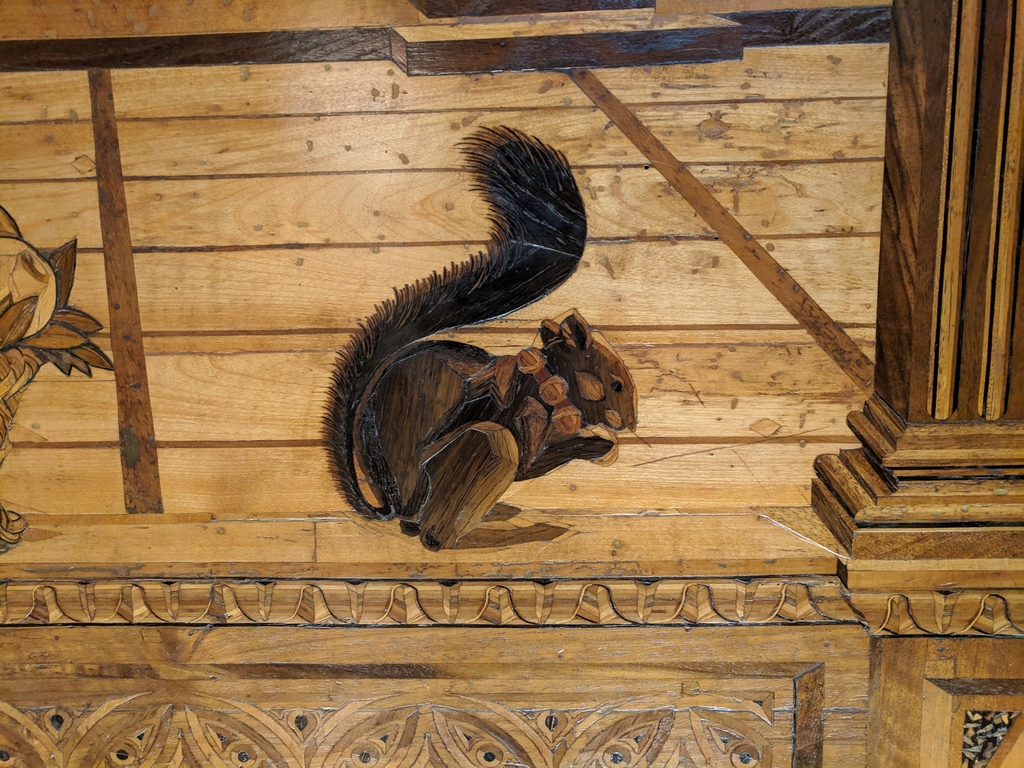
The Duke might need to clean out this cupboard and see what notes he put on those pieces of paper.
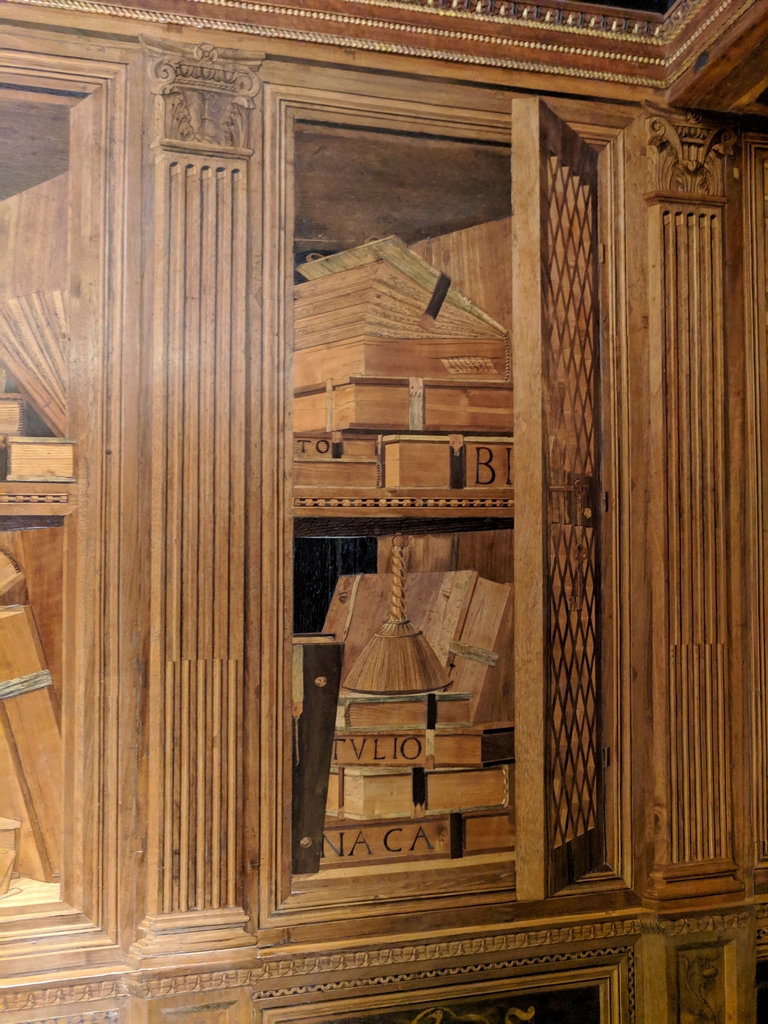
Yes, this was all flat, and made using different pieces of colored wood put together to create these scenes. Paul did a 2-minute video inside the Studiolo that will allow you to get a more complete view of the room: (click photo for link to video, 2 minutes)
The Duke himself is in one of the designs. It shows him dressed for home, with his spear pointed down at the ground, now free to study and contemplate.
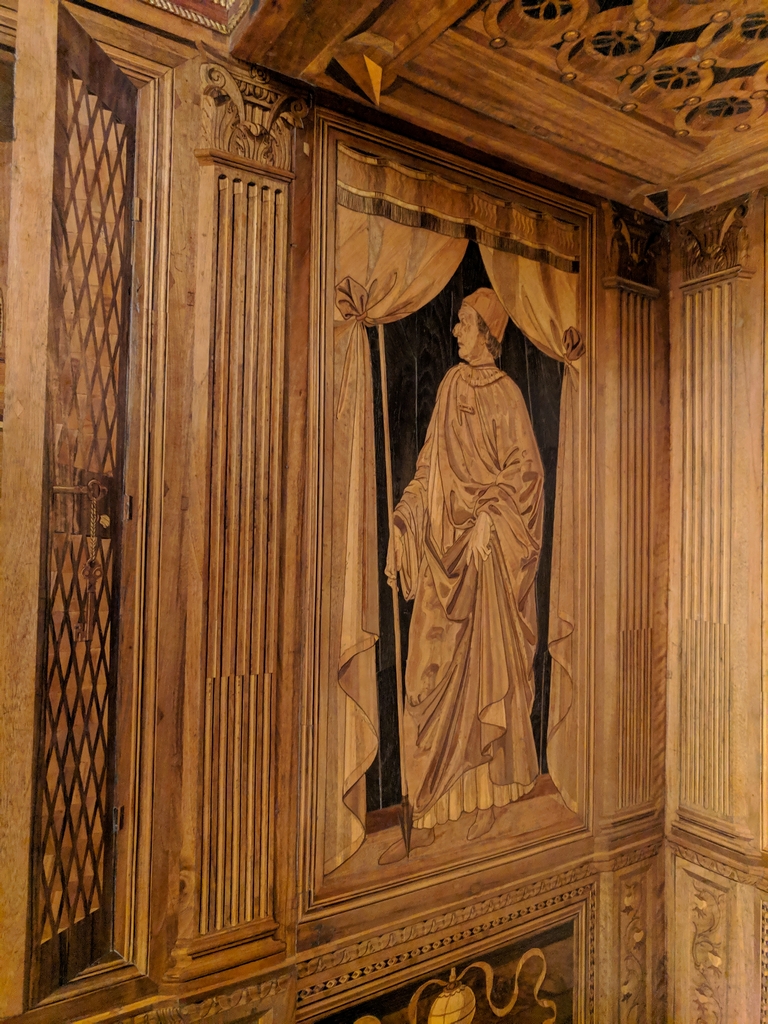
There were other examples in the palace of wood intarsia, with some elaborate doors. You can see in this spectacular door there are scenes of an idealized city on the bottom, and on the top are figures.
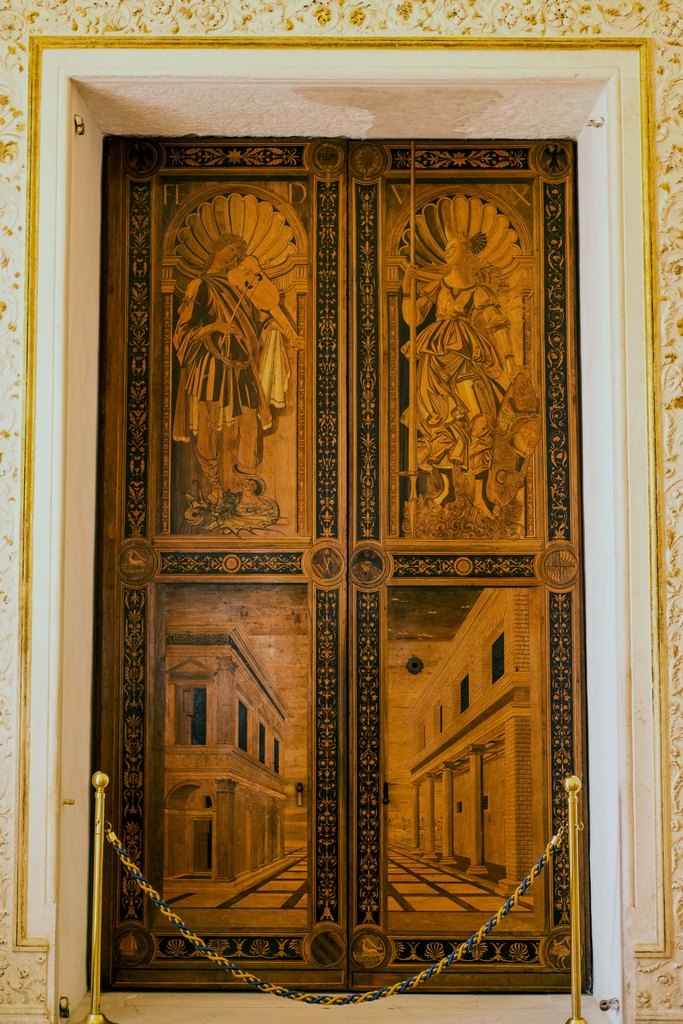
Of course, the Studiolo and intarsia are not the only things in Urbino. In fact, they aren't even the only things in the Ducal Palace. The palace houses a national museum of art. It has, according to Wikipedia, "one of the most important collections of Renaissance art in the world. It includes important works by artists such as Raphael, Van Wassenhove (a Last Supper with portraits of the Montefeltro family and the court), Melozzo da Forlì, Piero della Francesca (with the famous Flagellation), Paolo Uccello, Timoteo Viti, and other 15th century artists, as well as a late Resurrection by Titian."
Two wonderful works by Titian were displayed side-by-side, along with excellent information on restoration work that had been done for them. "The Last Supper" and "The Resurrection of Christ" were painted in the 1540s. The works are considered to represent Titian's transition from this classical period to his mature period.
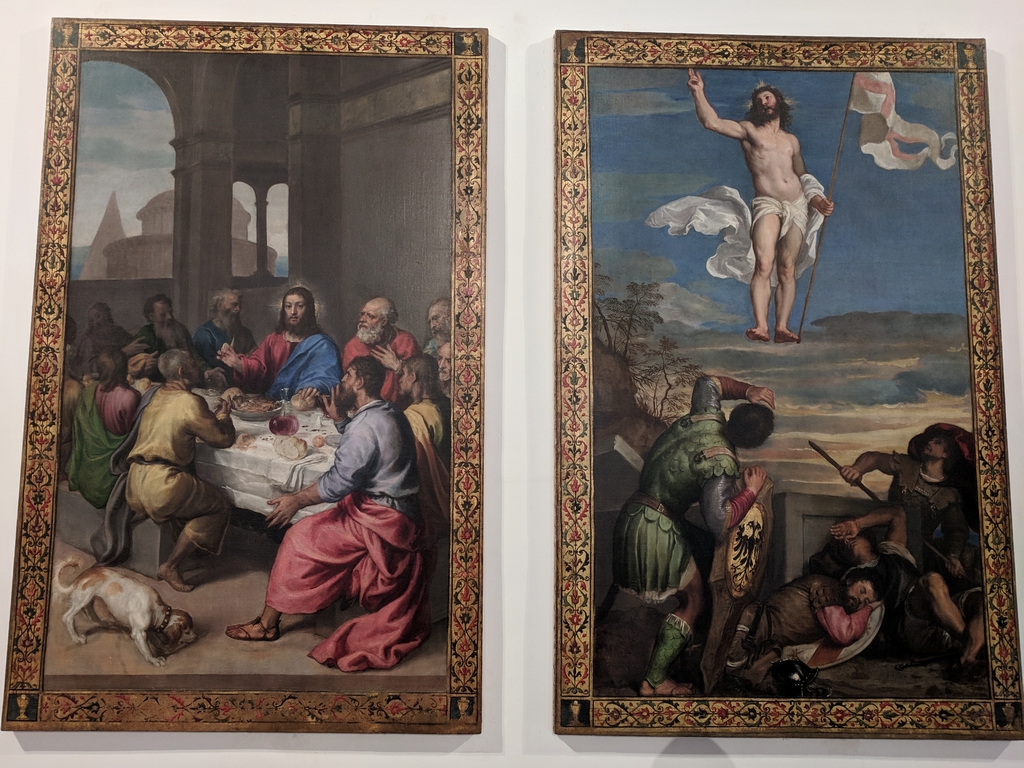
We were really impressed with this unfinished painting by Giovanni Bellini, 'Madonna and Child with St. John the Baptist and St. Anne'. The quality of the work in this painting was very impressive in person.
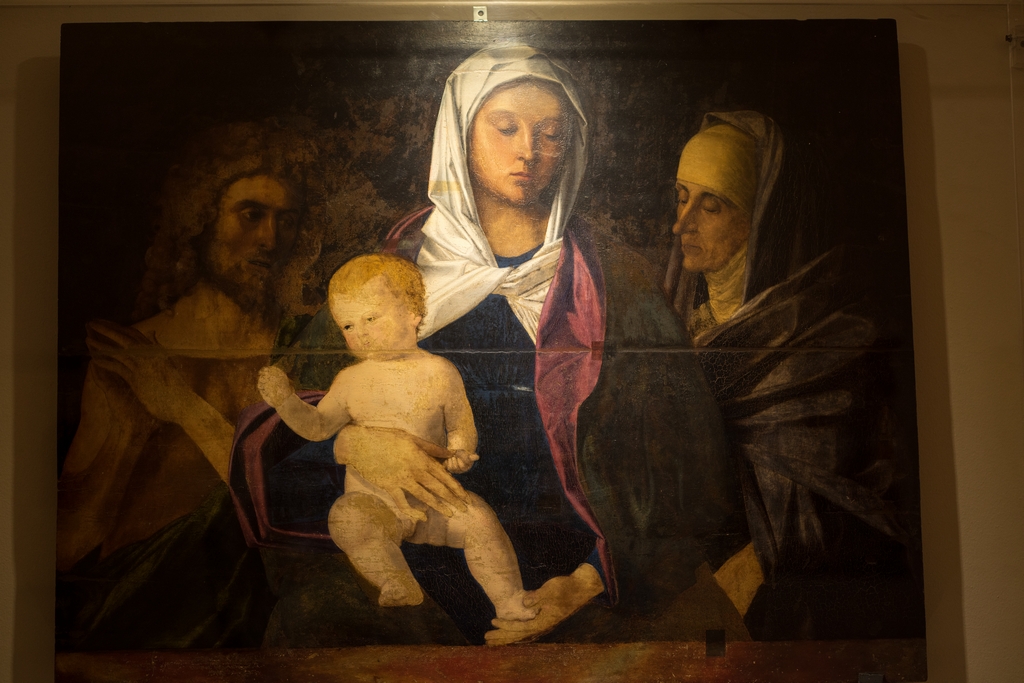
Urbino is the birth home of Raphael and of course the museum houses some works by him. One of the more famous is 'The Mute', also called 'Portrait of a Young Woman'.
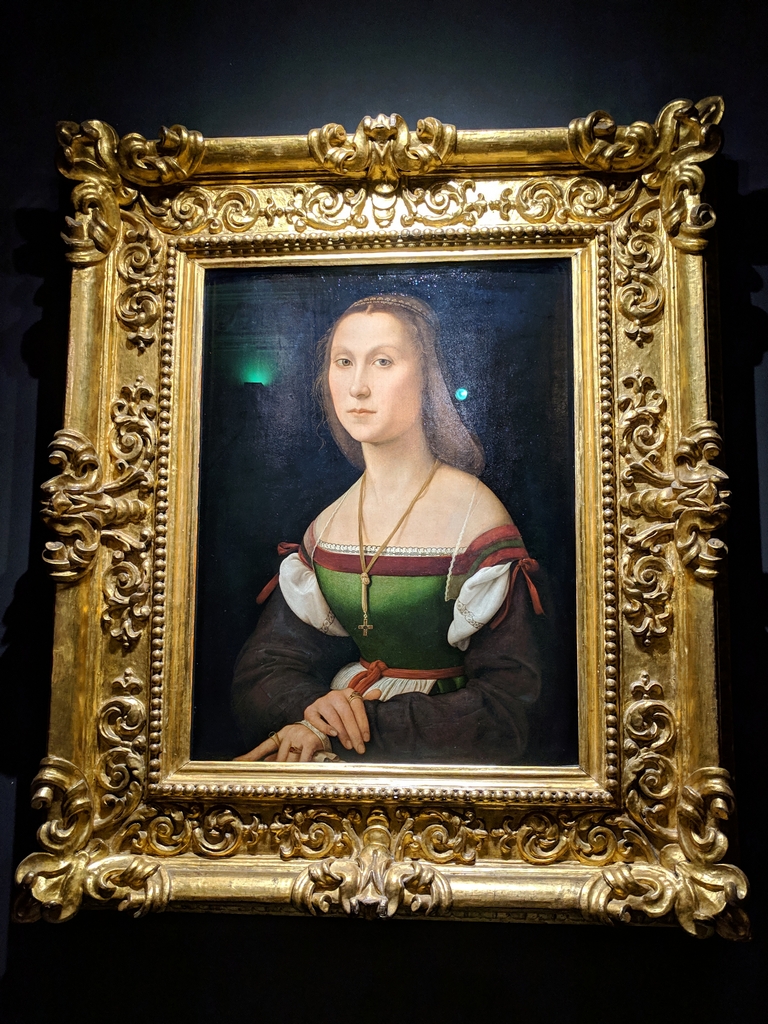
The Ducal palace itself was an interesting building. Really interesting. They had a model of the building:
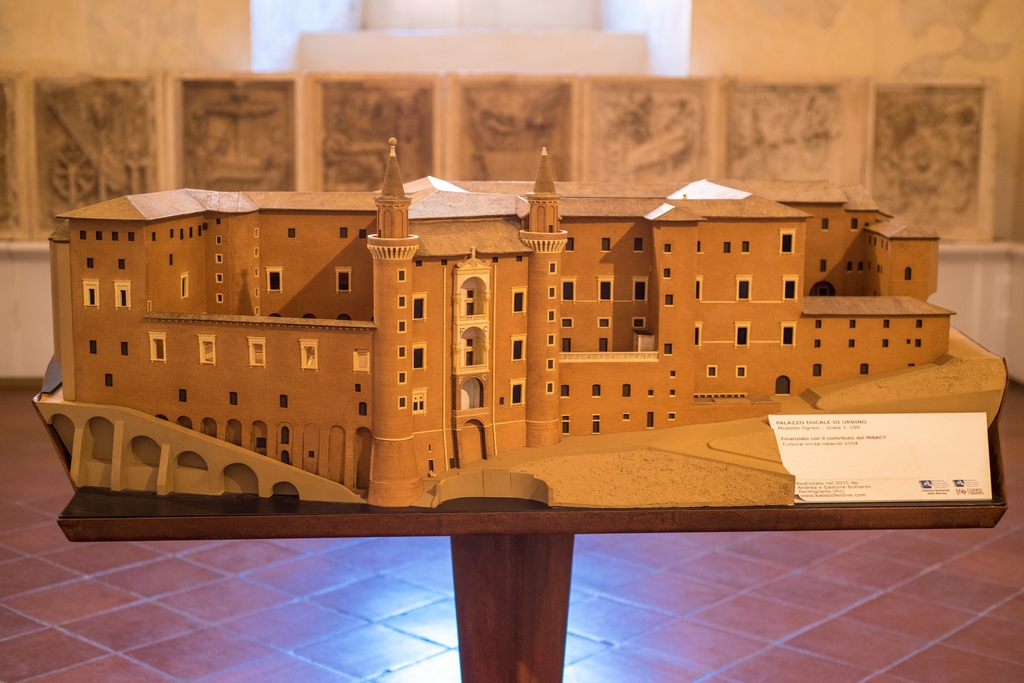
Here Anne is taking a picture of one of the wall decorations. This is the stairwell to the museum (one level up from ground level). Not sure it shows well in this picture, but the stairwell must be at least 10 feet wide!
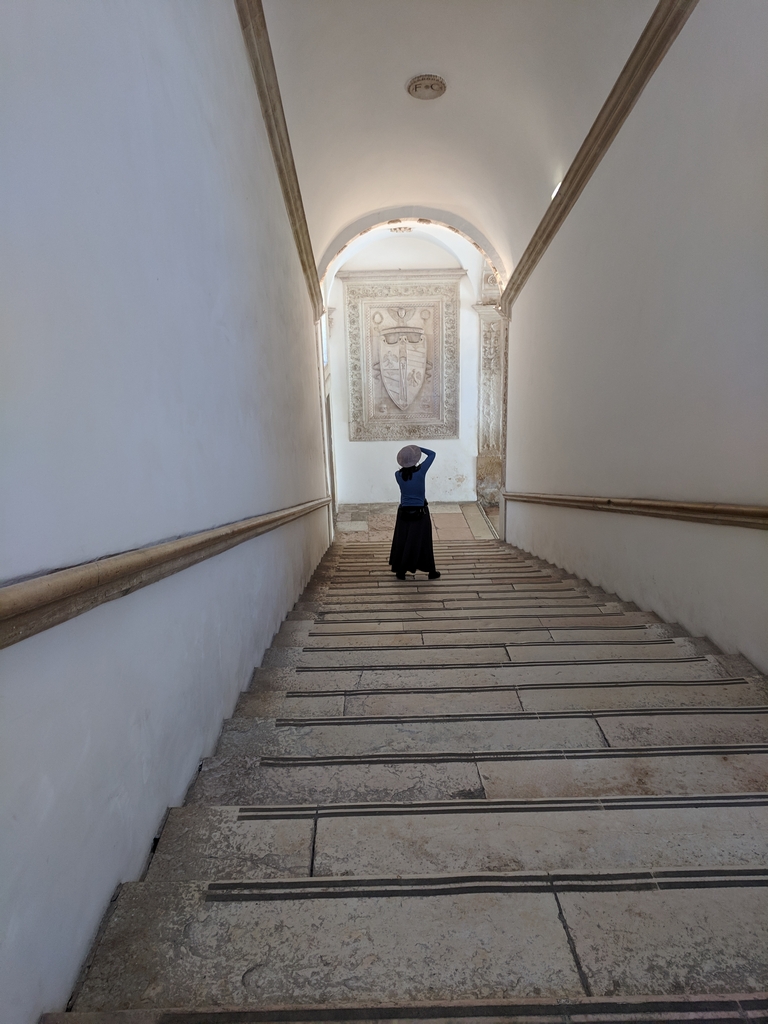
Almost every room in the palace has the Duke's emblem in the ceiling.
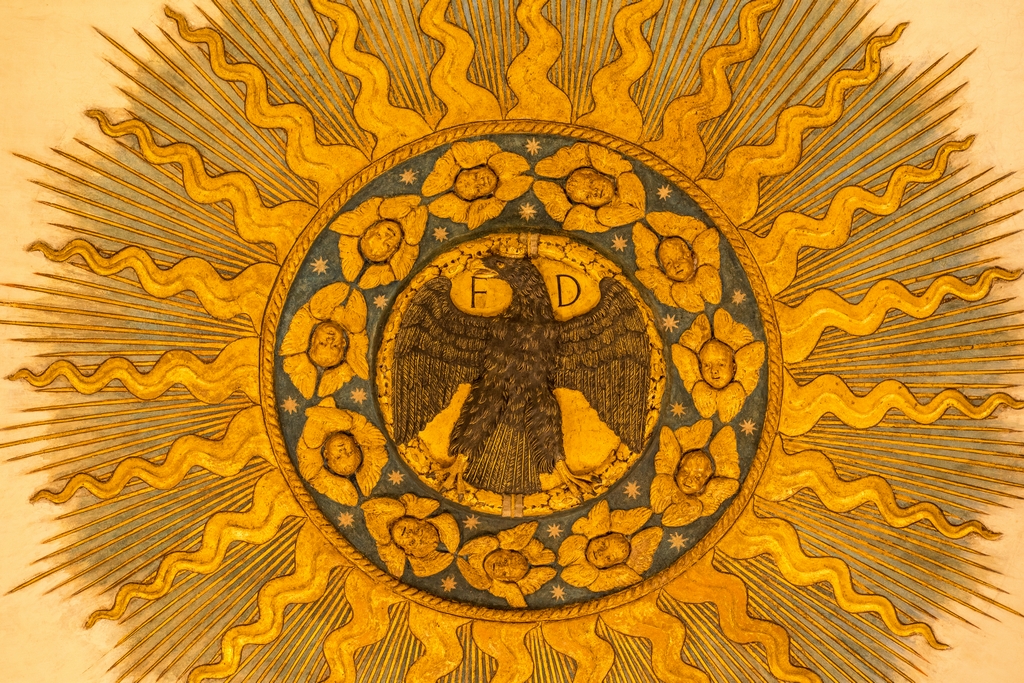
Not every room, though. One room that doesn't is the Duchess' Prayer room. This roof actually isn't original to this building; it was moved in 1919 from a different building in Urbino. We laid down on the floor to take this picture:
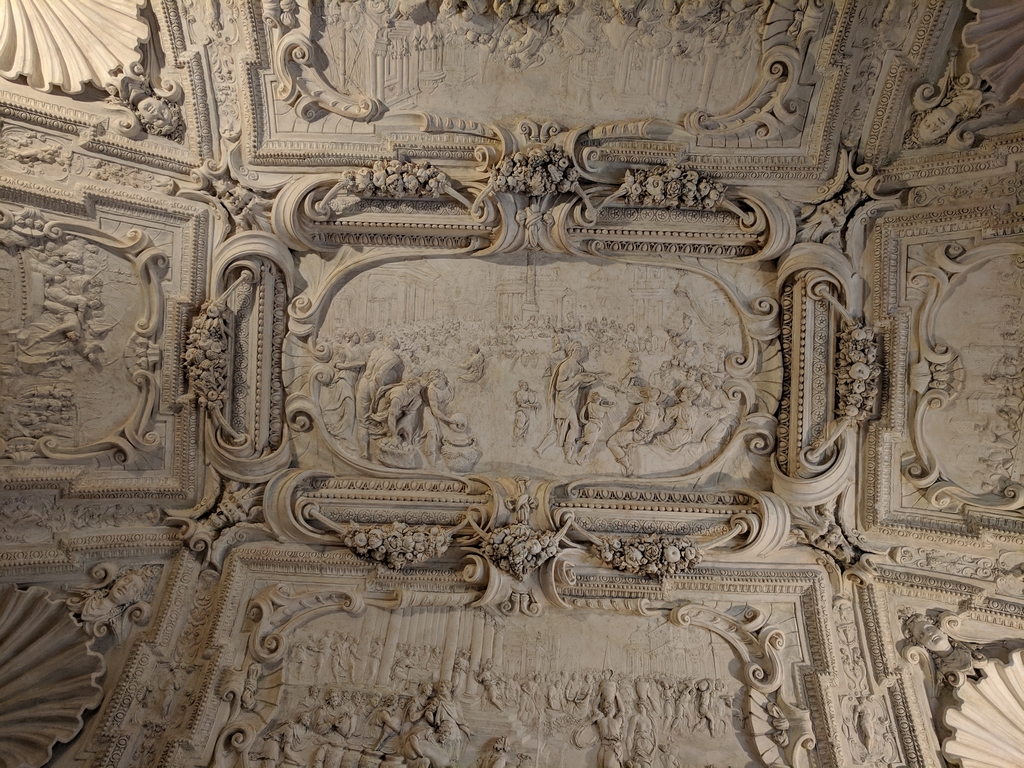
And if you are interested, Paul took a video of the roof. (If the quality isn't good enough, you might need to bump up the quality using the gear icon on the lower left; if you have a low-speed connection it might be difficult to play.)
Prayer room video (24 seconds)
The building includes cellars. In the cellar are some expected spots like a kitchen and pantry area. Also in the cellar, though, are an unexpected horse stable and saddlery! Seriously, the horse's barn is in stone, in the basement of the palace. There is actually a lower level, which isn't open to the public, where more horses were kept. The best way to understand this is videos:
Video #1: The saddlery (50 seconds)
Video #2: The Stable (81 seconds) - the stable could accommodate 30 horses
Video #3: Getting outside (137 seconds) - includes a nice view of the courtyard towards the end of the video
There was more to the basement than just the stables. Surprisingly to us, one item that we would have expected to be upstairs is actually in this basement area: the Duke's bath. It was likely warmer there than in the large upstairs halls. This next video shows a little tour of the kitchen area and the bath. You can also see that although this is the basement, because the palace is so high, on one side it is still above ground.
Video of basement & the Duke's bath (128 seconds)
Urbino is a lovely mountain town. In this picture, you can see the buildings climbing up the hillside. The wall at the bottom of the picture and going up the hill to the left is the old defensive wall for the city. This picture is from part way up the hill; we are parked in the parking lot that you can just barely see at the bottom of the picture. In the United States, more towns were located in valleys and along rivers. In Italy, many villages are located on the tops of hills. As you might remember from school, the tops of hills provide a defensive advantage.
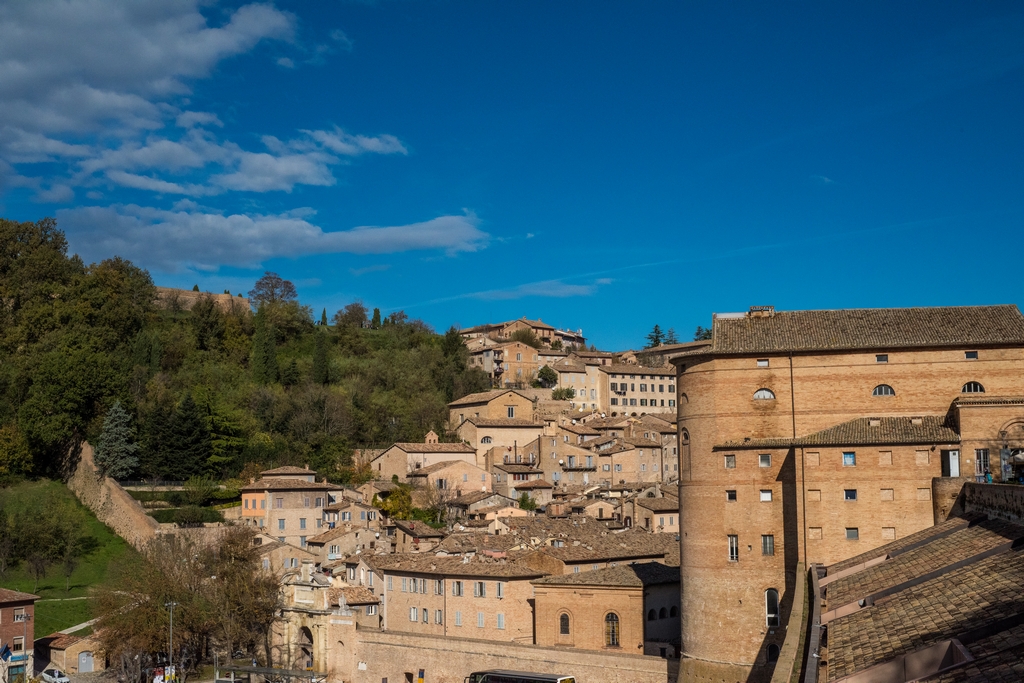
Out the other way is the countryside. Notice in the center of this next picture the field. This is a cultivated field. And yes, it is that steep.
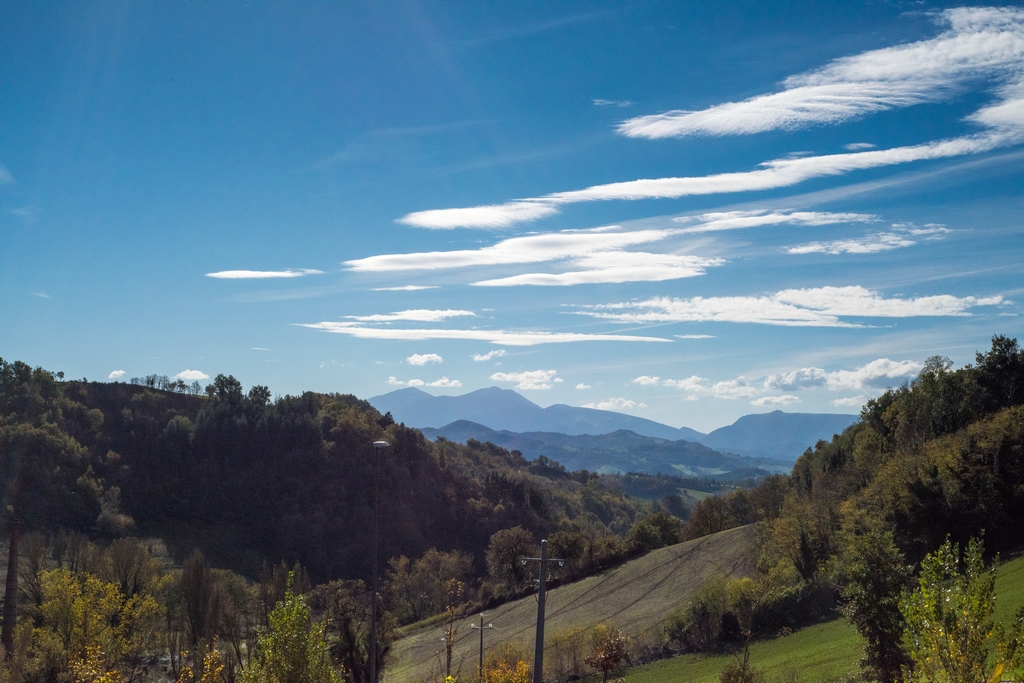
Looking from the parking lot up towards the Ducal Palace:
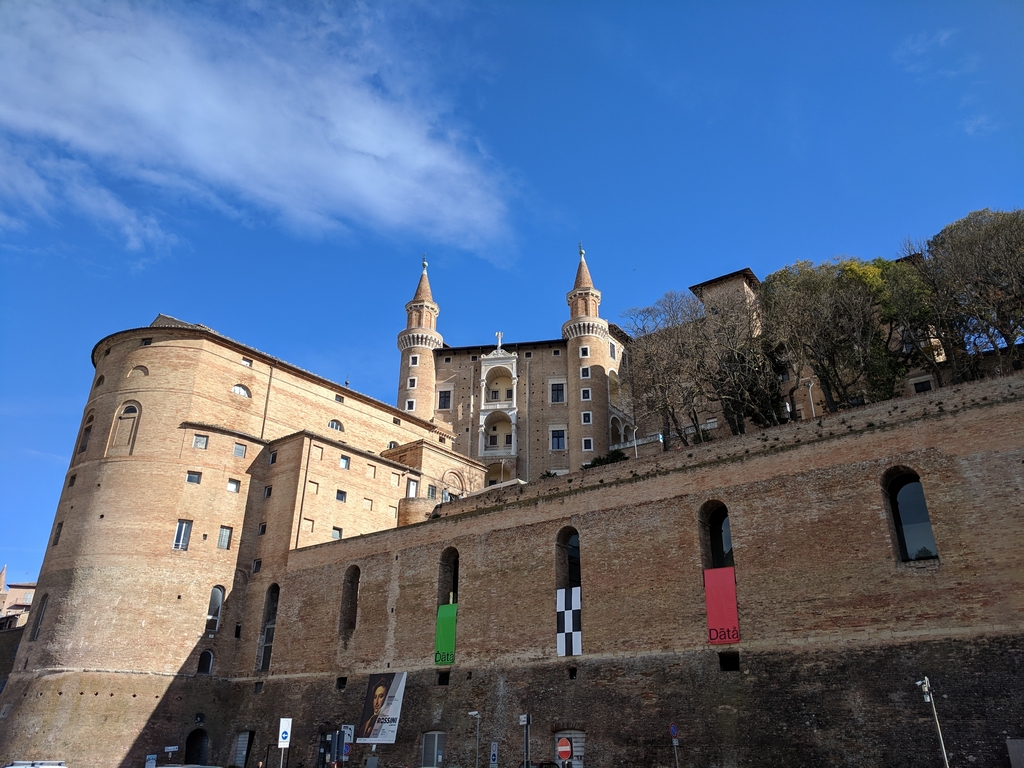
The path up is rather steep, and consists of stairs plus ramps. (There is an option of an elevator, I think. We didn't take it.)
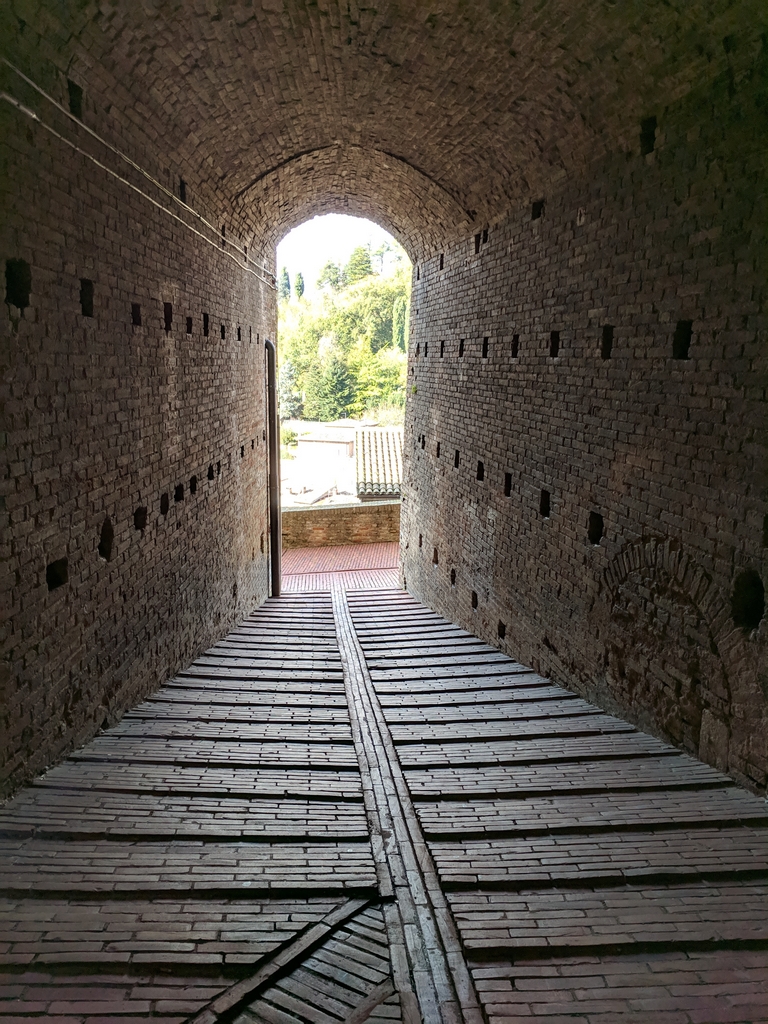
Notice there is a center section for water to run down, and ridges for better footing. We took a video showing the path from the parking lot up to the Ducal Palace.
Video of climbing in Urbino (9 minutes, so this is a long one)
This picture shows some of what you would see in the video:
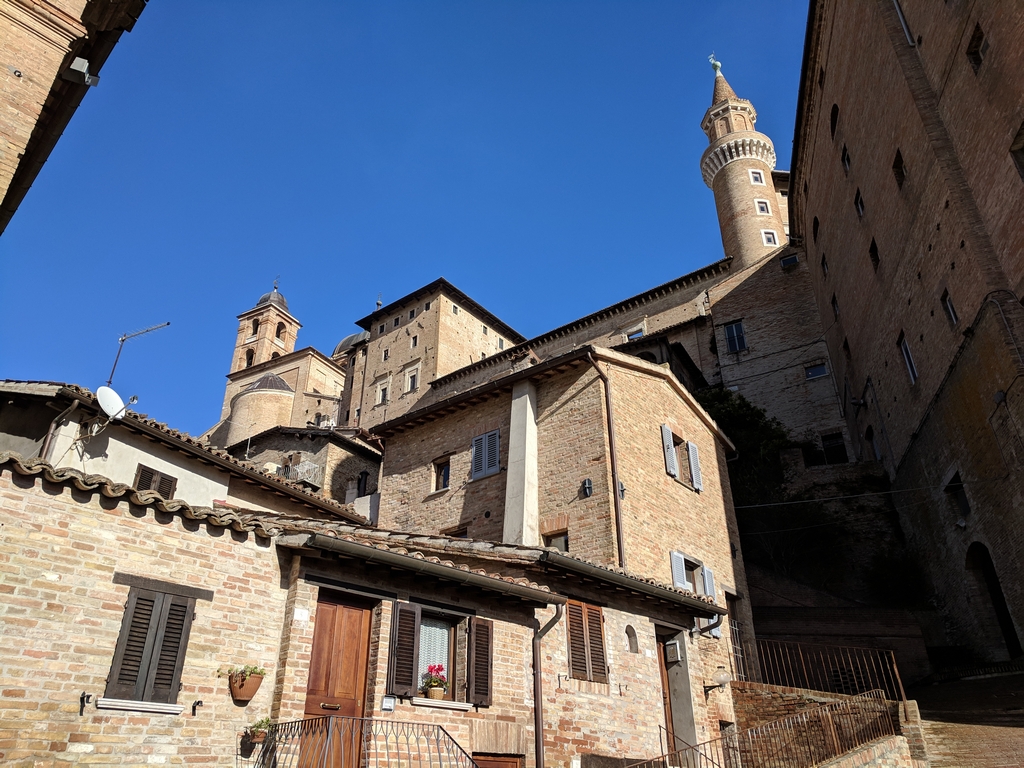
We had lunch at a little restaurant (Il Cortegiano Ristaurante). Paul had a caprese sandwich; Anne had a grilled vegetable sandwich.
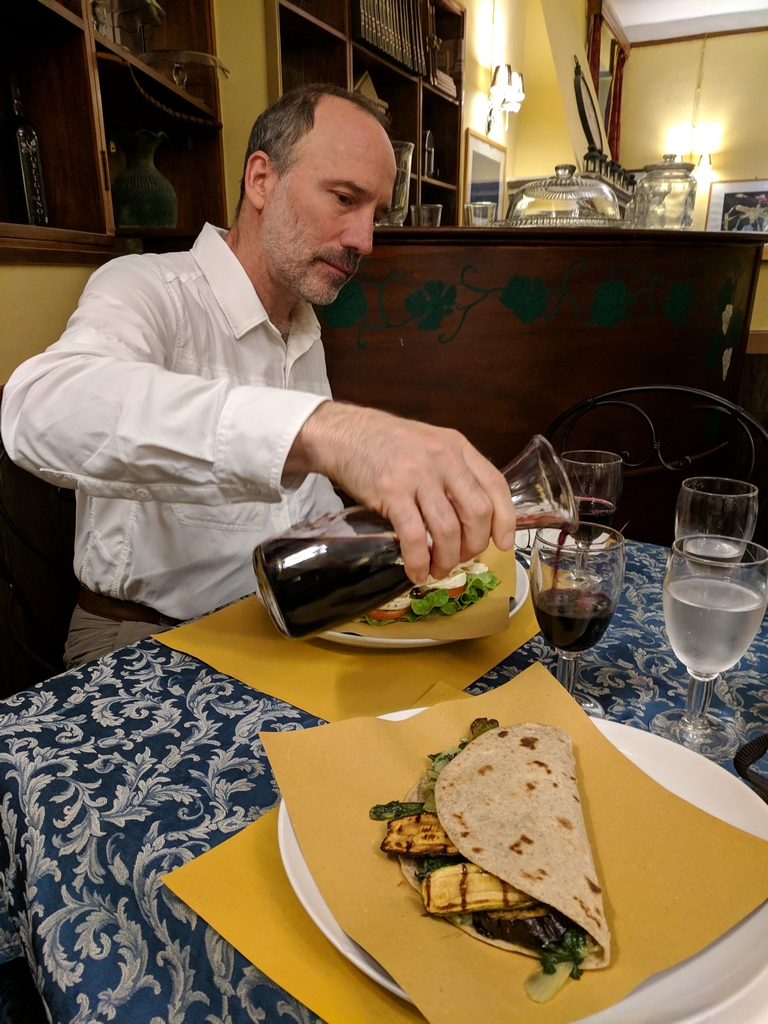
In Urbino we had our first gelatos! They were excellent.

And no, Anne didn't eat both of those.
Link to video describing the flavors (38 seconds)
We can heartily recommend a visit to Urbino!
Updated July 2020